Hamstring Injury
Hamstring Injuries
If you’re like most people, you probably think of the hamstring as nothing more than a pesky muscle that always seems to get injured. But the hamstring is actually responsible for a lot more than just causing pain. In this comprehensive guide, we’ll take a look at what the hamstring does, how to prevent injuries, and how to treat them if they do occur. So whether you’re an athlete or just someone who wants to protect their hamstrings from injury, this guide is for you!
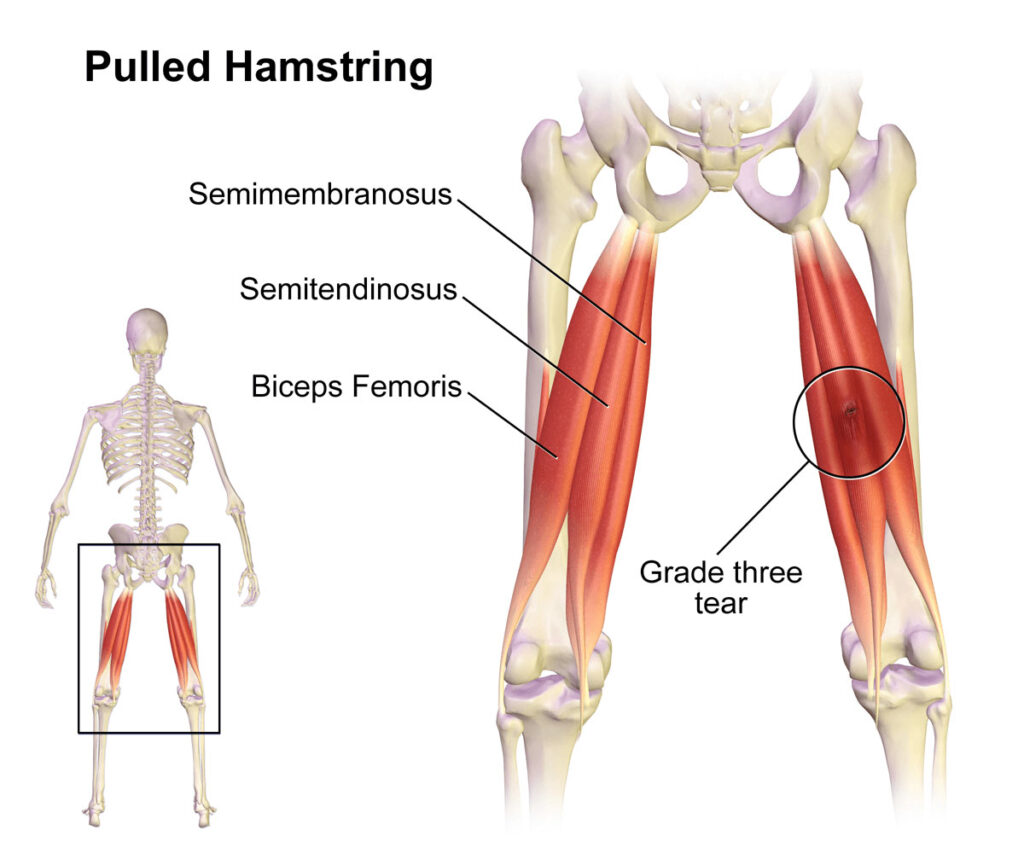
What are the hamstring muscles?
Hamstring muscles are a group of three muscles that are located at the back of the thigh. These muscles are responsible for bending the knee and extending the hip. The hamstrings are made up of the biceps femoris, semitendinosus, and semimembranosus muscles.
All three of these muscles originate from the ischial tuberosity, which is a bony protrusion on the pelvis. The biceps femoris muscle has two heads, the long head, and the short head.
The long head of the biceps femoris muscle attaches to the ischial tuberosity via the tendinous tissue that surrounds it. The short head attaches just below the long head. The semitendinosus and semimembranosus muscles attach to the ischial tuberosity via a common tendon.
The hamstring muscle group is responsible for knee flexion, which is the bending of the knee. They also assist in hip extension, which is the movement of the leg backward at the hip joint.
The hamstrings muscles work together with the quadriceps muscles (located at the front of the thigh) to produce these movements.

Hamstring Injuries
Hamstring muscle injuries are a common type of injury that can occur in both athletes and non-athletes. A hamstring is a group of three muscles located at the back of the thigh.
These muscles help to bend the knee and extend the hip. Hamstring injuries can range from a mild strain or pull, to a complete tear of the muscle.
Most pulled hamstring injuries occur during activities that require sudden bursts of speed, such as running, sprinting, or jumping. These types of activities put a great deal of stress on the hamstring muscles and can lead to an injury.
Hamstring tendon avulsions are also common in sports that involve a lot of kicking, such as soccer and football.
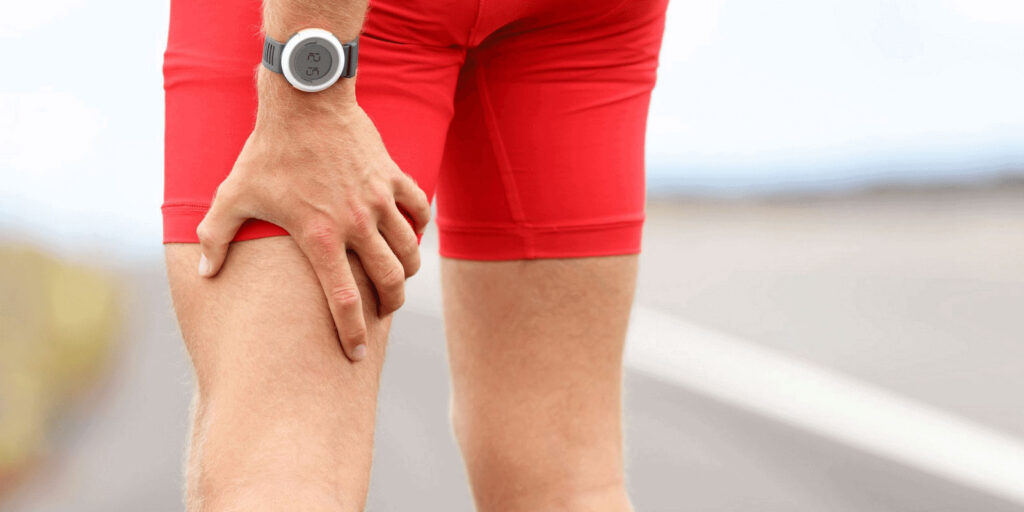
Symptoms of Hamstring Injuries
Hamstring injuries are one of the most common injuries in athletes. The symptoms of a hamstring injury can vary depending on the severity of the injury.
Mild hamstring injuries may only cause slight pain or discomfort in the back of the thigh. More severe hamstring injuries can cause more severe pain and may even result in swelling and bruising.
Hamstring injury is graded I, II, or III, based on the intensity of symptoms:
Grade I: Mild pain with activity. Can continue activity but may have some discomfort.
Grade II: More intense pain with activity. May have difficulty continuing activity.
Grade III: Severe pain with any activity. Unable to continue an activity.
If you think you may have injured your hamstring, it is important to see a doctor or other healthcare provider as soon as possible. They can help determine if you have severe injury and provide you with the appropriate treatment.
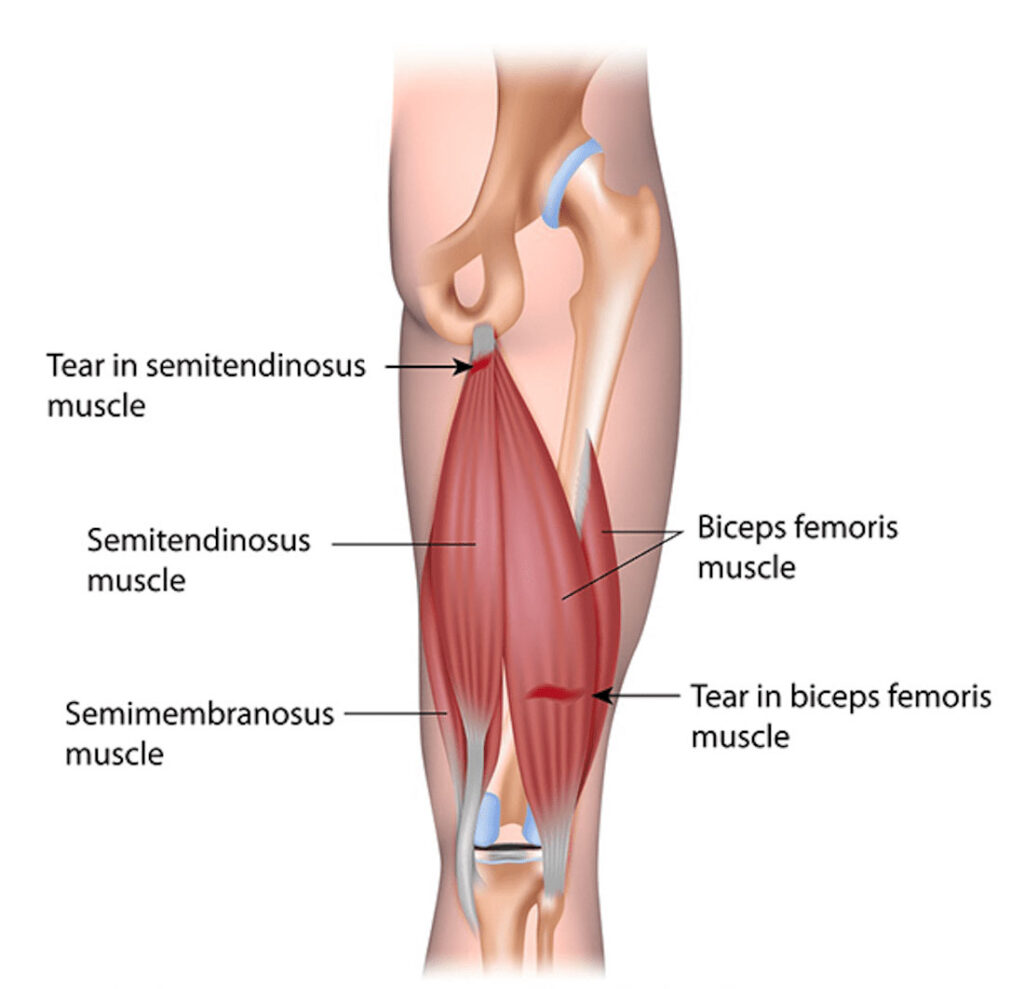
Diagnosis of Hamstring Injuries
Most hamstring injuries are difficult to diagnose because they can vary greatly in terms of severity and symptoms. The most common symptom of a hamstring injury is sharp pain in the back of the thigh, but some patients may also experience weakness, stiffness, or swelling in the injured leg.
Imaging tests such as MRI or ultrasound may be necessary to confirm the diagnosis and determine the extent of the hamstring tendon avulsion.
Treatment for a hamstring injury
The treatment for a hamstring injury will vary depending on the severity of the injury. For a mild hamstring strain, treatment may include ice, rest, and over-the-counter pain medication. More severe hamstring strains may require physical therapy and/or surgery.
Severe hamstring strains can take several weeks or months to heal completely. During this time, it is important to avoid activities that put stress on the hamstring muscles. Once the hamstring muscle strain has healed, physical therapy may be necessary to help strengthen the muscles and improve flexibility.
Hamstring injuries can take several weeks or months to heal completely. During this time, it is important to avoid activities that put stress on the hamstring muscles. Once the injury has healed, physical therapy may be necessary to help strengthen the muscles and improve flexibility.
If you have a hamstring injury, it is important to see a doctor so that you can receive the proper diagnosis and treatment. Hamstring injuries can be very painful and debilitating, so it is important to get the right treatment as soon as possible.
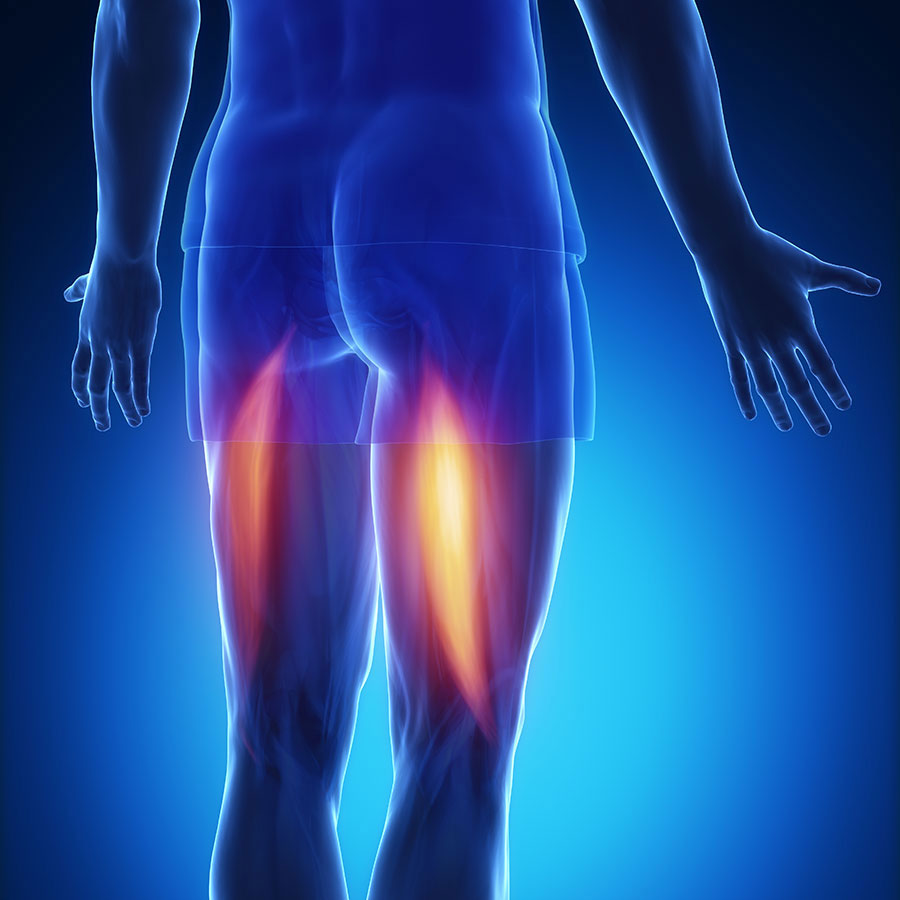
Tips to prevent Hamstring injuries
Following are some tips to help prevent hamstring injuries:
- Hamstring stretches and strengthening exercises are important for preventing hamstring injuries.
- Wearing proper shoes that support the ankles and feet can also help prevent injuries.
- Avoiding high-impact activities that may stress the hamstrings, such as sprinting or long-distance running, can also help reduce the risk of injury.
- If you do experience a hamstring injury, it is important to seek medical attention and follow a rehabilitation program to ensure a full recovery.
How to strengthen the Hamstring Muscles
1. Hamstring curls
This exercise can be performed with a resistance band, dumbbell, or weight machine. To do this exercise, lie on your back with your knees bent and feet flat on the floor.
Place the band around your ankles, hold the dumbbell in your left hand, or hook your feet under the padded lever of a low pulley weight machine.
Curl your legs up towards your glutes, keeping your knees pointed straight ahead. Slowly return to the starting position and repeat for 8-12 repetitions.
2. Glute bridge
This exercise can be performed with or without weights. To do this exercise, lie flat on your back with feet flat on the ground and shoulder-width apart, legs bent to 90 degrees.
Drive your heels into the ground, and lift your torso and upper legs into the air, extending your hips until your thighs and torso are in line with each other- hold for two seconds.
Squeeze your glutes at the top of the bridge. Slowly lower your body back to the starting position. Repeat for 8-12 repetitions.
3. Leg extension
To do this exercise, sit on the machine with your legs under the padded lever and select the appropriate weight.
Extend your legs out in front of you, and then return to the starting position. Repeat for 8-12 repetitions.
4. Standing hamstring curl
This exercise can be performed with a resistance band or cable machine. To do this exercise, stand with feet hip-width apart and place the band around your ankles or hook your left ankle into the low pulley of a cable machine.
Curl your leg up towards your glutes, keeping your knee joint pointed straight ahead. Slowly return to the starting position and repeat for 8-12 repetitions.
5. Step-up
To do this exercise, stand in front of a bench or box and place your left foot on the surface.
Keeping your core engaged, drive your left heel into the surface as you step up, bringing your right leg to meet your left so that you are standing on top of the bench or box with both feet.
Step back down with your left leg, and then repeat with your right leg. Repeat for 8-12 repetitions on each leg.
6. Single-leg deadlift
To do this exercise, stand on your left leg with your right leg hanging behind you.
Keeping your chest up and shoulders back, hinge forward at the hips until your torso is parallel to the ground and you feel a stretch in your hamstrings.
Return to the starting position by driving through your left heel. Repeat for 8-12 repetitions on each leg.
7. Glute kickback
To do this exercise, start on all fours with your knees under your hips and your hands under your shoulders. Keeping your core engaged, lift your right leg up and back, keeping your thigh parallel to the ground. Return to the starting position and repeat for 8-12 repetitions on each leg.
8. Lateral lunge
To do this exercise, stand with your feet hip-width apart and hold a dumbbell in each hand. Take a large step to the right, and then lower your body into a lunge, keeping your right knee over your ankle and your left leg straight. Return to the starting position and repeat on the other side. Repeat for 8-12 repetitions on each side.
9. Curtsy lunge
To do this exercise, stand with feet hip-width apart and hold a dumbbell in each hand at arm’s length by your sides. Step your left leg diagonally behind you and to the right of your right leg, and then lower your body into a lunge. Return to the starting position and repeat on the other side. Repeat for 8-12 repetitions on each side.
10. Hamstring curl with ball
This exercise can be done with a stability ball or medicine ball. To do this exercise, lie on your back with your palms flat on the floor and your feet resting on top of the ball. Use your feet to roll the ball toward your glutes, and then press through your heels to return to the starting position. Repeat for 8-12 repetitions.
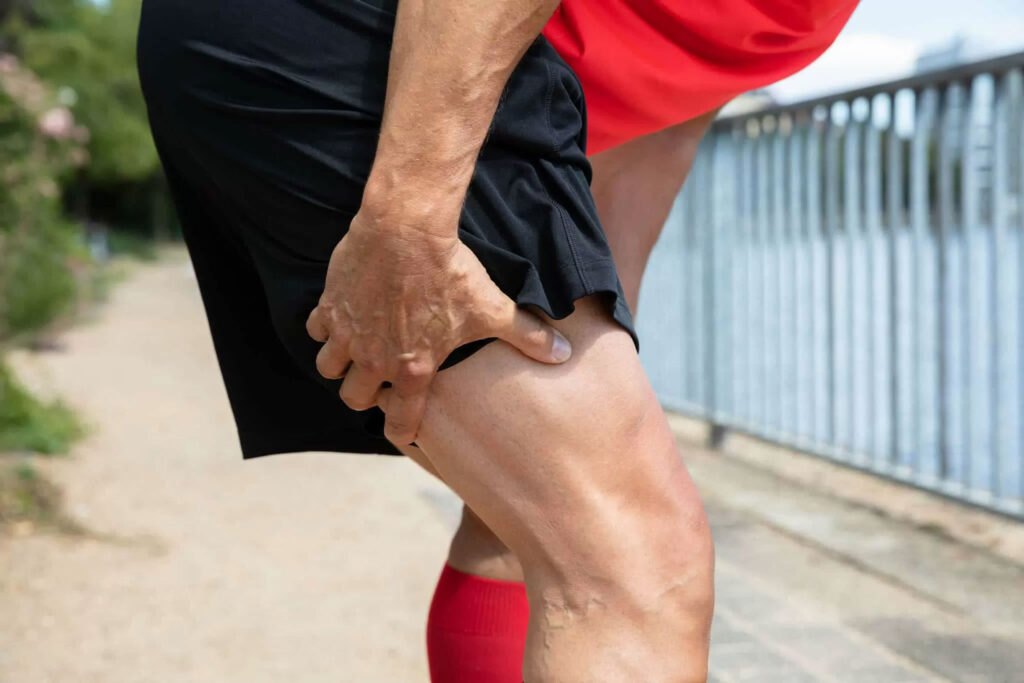
Frequently Asked Questions about Hamstring Injuries
The most common causes of hamstring injuries are overuse, improper stretching, and muscle imbalance. Overuse occurs when the muscle is used too much and not given time to rest and recover. This can happen when someone increases their mileage too quickly or does not warm up properly before exercise. Improper stretching can cause the muscle to become tight, making it more susceptible to injury. Muscle imbalance can occur when the quadriceps (the muscles in the front of the thigh) are stronger than the hamstrings, which puts additional strain on the hamstrings and can lead to injury.
The most common symptom of a hamstring injury is a pain in the back of the thigh. This pain may be dull or sharp, and it may be worse when walking, running, or engaging in other activities that require the use of the hamstring muscles. Other symptoms may include muscle weakness, swelling, bruising, or difficulty straightening the leg.
The treatment for a hamstring injury will vary depending on the severity of the injury. For milder injuries, rest, ice, and over-the-counter pain medication may be all that is needed. More severe injuries may require physical therapy and/or surgery.
There are several things you can do to help prevent hamstring injuries. First, make sure to warm up properly before exercise or activity. Second, stretch regularly to keep the muscles flexible. Third, balance your workout routine so that you are strengthening all of the muscles in your legs, not just the quadriceps. And finally, listen to your body and give yourself time to rest and recover if you are feeling pain or discomfort in your hamstrings.
An inguinal hernia occurs when a portion of the intestines protrudes through a weakness in the abdominal wall. This type of hernia is most common in men and often occurs on one side of the body. Symptoms of an inguinal hernia may include pain or discomfort in the groin area, a bulge in the area, or a burning sensation. If the hernia is left untreated, it can lead to serious complications such as intestinal blockage or strangulation. Treatment for an inguinal hernia typically involves surgery to repair the abdominal wall weakness and prevent further prolapse. In some cases, a hernia support belt may be worn to help relieve symptoms.
Have you been injured at some point in your journey?
Are you not achieving your highest level of function?
We’ve helped hundreds of people at all walks in life
get back to performing their best painfree!
3 Ways to Level Up Your Rehab and Injury Prevention With Us





